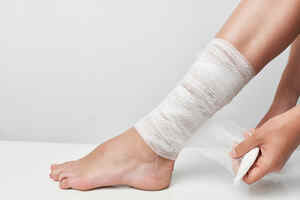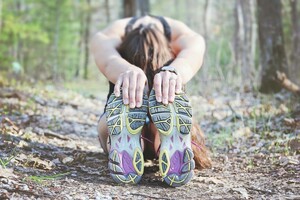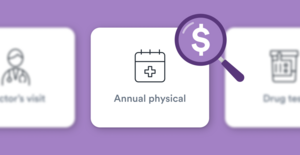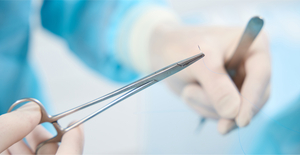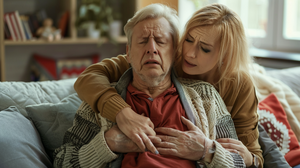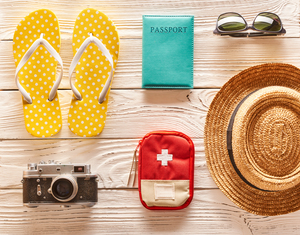Key points
- A stye is a common eye infection caused by bacteria infecting an oil gland or hair follicle on the eyelid.
- Home remedies for styes include warm compresses, keeping the eyelid clean, over-the-counter treatments, and avoiding eye makeup.
- If a stye does not improve after 48 hours of home care or worsens, medical attention is needed.
- Good hygiene, such as regular hand washing and proper contact lens care, can help prevent future styes.
- To prevent future styes, maintain good hygiene, wash your hands frequently, especially before touching your eyes or caring for your contact lenses, use a mild soap to clean your face and eyelids, avoid sharing towels or eye makeup, replace your eye makeup every 2 to 3 months, and clean your contact lenses with lens cleaning solution.
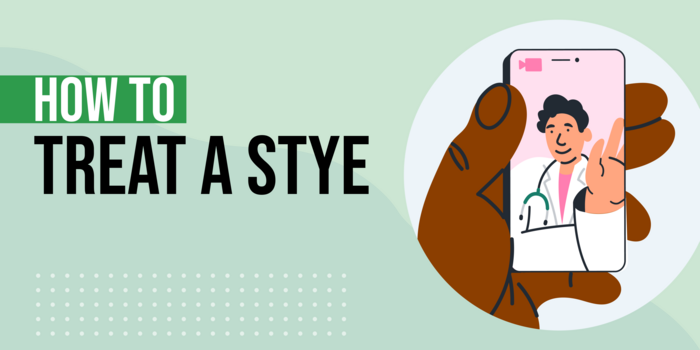
If you have a small, painful bump on your eyelid, you could have a stye. While styes usually go away on their own within a week or two, there are some things you can do at home to speed up the healing process and alleviate symptoms.
What is a Stye?
According to the Mayo Clinic, a stye is a common eye infection that occurs when a hair follicle or oil gland in the eyelid becomes infected. It usually appears as a small, red, painful bump on the edge of the eyelid. Styes can be uncomfortable or slightly painful, but fortunately, there are some home remedies that work well for relieving this discomfort and healing your eye.
Common Symptoms Of A Stye
Styes are usually easy to recognize due to their distinctive appearance. But in case you’re wondering if your eye irritation is caused by a stye or not, here are some of the most common symptoms of a stye, according to the Cleveland Clinic:
- A red, swollen bump on or near the edge of the eyelid
- Pain or tenderness in the affected area
- A sensation of pressure or discomfort in the eye
- Crusting or discharge around the eyelid
- Sensitivity to light
Causes of Styes
A stye, also known as a hordeolum, is primarily caused by a bacterial infection in the oil glands or hair follicles on the eyelid. These infections often occur due to:
- Bacterial Contamination: Staphylococcus bacteria are commonly found on the skin, and they can infect the oil glands or hair follicles, leading to the development of a stye.
- Blocked Glands: The eyelids have numerous tiny oil glands, especially around the eyelashes. These glands can become clogged by dead skin, dirt, or oil buildup, creating a conducive environment for bacterial growth.
- Touching Eyes with Dirty Hands: Transferring bacteria to the eyes by touching them with dirty hands can increase the risk of developing a stye.
- Using Contaminated Makeup or Beauty Products: Old or contaminated eye makeup, such as mascara or eyeliner, can introduce bacteria to the eyelids.
- Wearing Contact Lenses: Not properly cleaning contact lenses or handling them with unwashed hands can transfer bacteria to the eyelids.
How to Get Stye Relief at Home
A stye will usually go away within one to two weeks, according to the Cleveland Clinic. If it does not resolve in that time, you will need to see an eye doctor. In the meantime, here’s what to do to reduce your discomfort and heal faster.
1. Use a Warm Compress
A warm compress is the most effective way to reduce pain and swelling from a stye, according to the Cleveland Clinic. Here are the steps to follow:
- Soak a clean washcloth in warm water
- Wring out the excess water.
- Place the warm compress over the affected eye for 10-15 minutes
- Repeat this process 3-4 times a day
2. Keeping the Affected Eyelid Clean
Styes are usually caused by bacteria that infect a sweat gland or hair follicle. Here are some tips to follow that will both help prevent a stye from forming, or help you heal from a stye faster:
- Wash your hands thoroughly before touching your eyes
- Use a mild soap or baby shampoo to clean your eyelids and lashes
3. Use Over-The-Counter Treatments
There are a couple of options for over-the-counter stye treatments, according to Healthline.
- OTC eye ointment: These are available at retail pharmacies and can help ease discomfort from burning, stinging, or itching.
- Pain relievers: Ibuprofen or acetaminophen can help to reduce pain and inflammation.
4. Avoid “Popping” Or Squeezing Your Stye
It is important to avoid trying to “pop” or squeeze your stye as it can lead to more discomfort or a deeper infection, according to the Mayo Clinic.
5. Pause Your Eye Makeup Routine
Wearing eye makeup can cause more irritation or discomfort, and may introduce more bacteria, according to the Mayo Clinic. They recommend that you avoid wearing eye makeup until your stye is completely healed.
When to go to Urgent Care For a Stye
Most styes will heal on their own, according to the Mayo Clinic. However, some cases may be severe and need medical treatment. The Cleveland Clinic notes that you should see a doctor if you have any of the following symptoms:
- Your Stye does not improve after 48 hours of home care
- Your eye is swollen shut
- There is pus or blood leaking from the stye
- The pain or swelling gets worse after the first two to three days
- Blisters form on your eyelids
- Your eyelid feels hot
- You have any changes in your vision
- You have recurring styes
Urgent care clinics are a great way to get fast, cost-effective care when you have a non-life-threatening condition like an eye stye. Some common medical treatments for styes, according to the Cleveland Clinic, include:
- Draining the stye under local anesthesia
- Prescription antibiotic ointment
- Steroid injections to reduce severe swelling
- Expedited referral for specialty care, if needed
What You Can Do to Prevent Future Styes
Maintaining good hygiene is important to preventing styes, according to the Cleveland Clinic. Additionally, they recommend the following:
- Wash your hands frequently, especially before touching your eyes or caring for your contact lenses
- Use a mild soap and clean towel to wash and dry your face and eyelids
- Avoid sharing towels, washcloths, or eye makeup with others
- Replace your eye makeup every 2 to 3 months
- Clean your contact lenses with lens cleaning solution and dispose of daily wear or “limited use” contact lenses according to the recommendations provided by your eye doctor
Key Takeaways About Styes
A stye is a small infection that can develop at the edge of an eyelid—usually because a gland or hair follicle becomes infected by bacteria. Most styes are not cause for concern, according to the Cleveland Clinic. They usually heal on their own within a week or so, and you can get relief from the discomfort by applying a warm compress several times a day.
Good hand washing before you touch your eyes or place or remove your contact lenses is important to avoid getting styes. Additionally, you should follow your eye doctor’s recommendations for cleaning and changing your contact lenses, as well as getting new eye makeup every few months and never sharing eye makeup with others.
FAQs
What is a stye?
A stye is a common eye infection caused by bacteria infecting an oil gland or hair follicle on the eyelid.
How can I treat a stye at home?
Home remedies include using a warm compress, keeping the eyelid clean, using over-the-counter treatments, and avoiding eye makeup.
When should I seek medical attention for a stye?
If a stye does not improve after 48 hours of home care, if it worsens, or if you experience changes in your vision, you should seek medical attention.
How can I prevent future styes?
Regular hand washing, proper contact lens care, and replacing eye makeup every 2 to 3 months can help prevent future styes.
Can a stye cause changes in my vision?
Yes, if you experience changes in your vision while having a stye, you should seek medical attention immediately.
Can over-the-counter treatments help with stye symptoms?
Yes, over-the-counter treatments such as OTC eye ointment and pain relievers like ibuprofen or acetaminophen can help ease discomfort from burning, stinging, or itching and reduce pain and inflammation.
What are the potential risks of trying to "pop" a stye?
Trying to "pop" a stye can lead to more discomfort or a deeper infection. It's recommended to avoid this action.
Should I stop wearing eye makeup if I have a stye?
Yes, wearing eye makeup can cause more irritation or discomfort, and may introduce more bacteria. It's recommended to avoid wearing eye makeup until your stye is completely healed.

